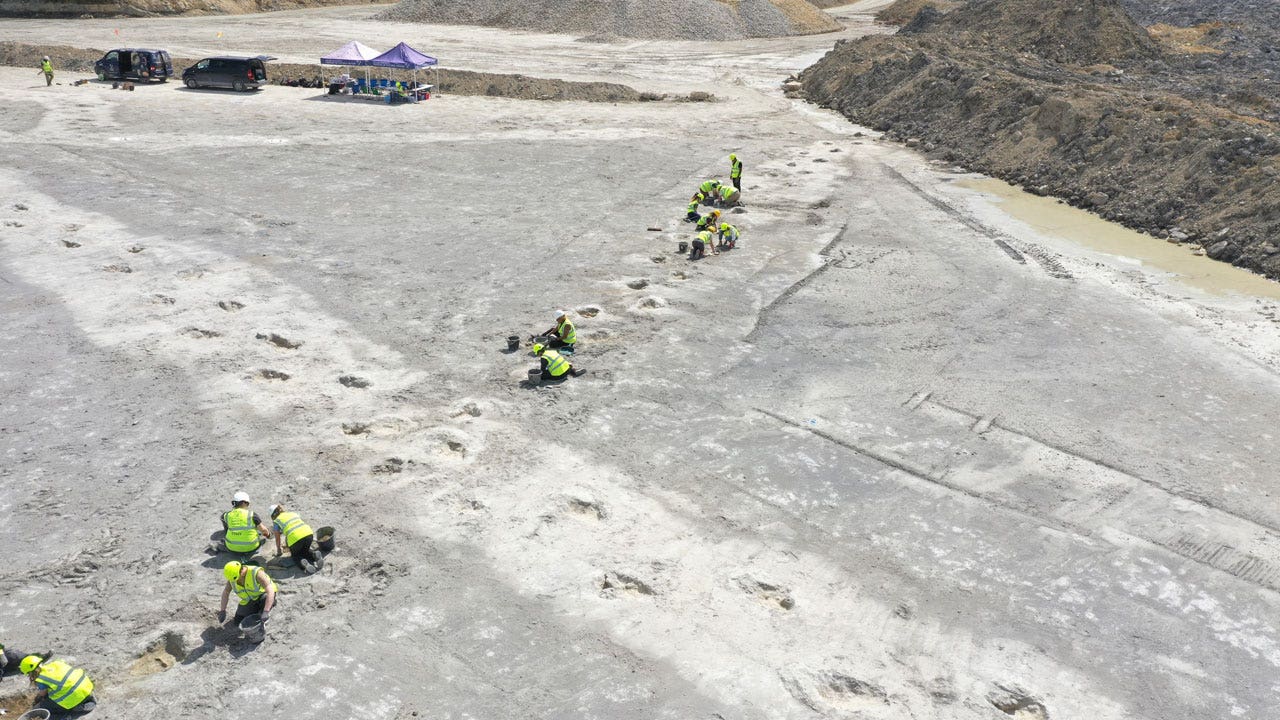‘Dinosaur highway’ footprints dating back 166 million years discovered in England

A remarkable discovery was made in southern England, as a worker digging up clay in a limestone quarry stumbled upon nearly 200 dinosaur tracks dating back 166 million years. This incredible find, dubbed the “dinosaur highway,” sheds light on the lives of these ancient creatures during the Middle Jurassic period.
The tracks reveal fascinating details about the dinosaurs that once roamed the area. Some tracks belong to Cetiosaurus, massive long-necked herbivores that reached lengths of nearly 60 feet. Others were made by Megalosaurus, a fearsome 30-foot predator and the first dinosaur to be scientifically named two hundred years ago. These tracks provide valuable insights into the movements and interactions of these prehistoric giants.
A team of over 100 researchers from the universities of Oxford and Birmingham worked together to excavate the Dewars Farm Quarry in Oxfordshire, where the tracks were found. The findings will be showcased at a new exhibit at the Oxford University Museum of Natural History and featured on the BBC’s “Digging for Britain” program next week.
One of the most intriguing aspects of the discovery is a section of the tracks where the paths of different dinosaurs intersect, raising questions about possible interactions between the herbivores and carnivores. The meticulous documentation of the tracks, including over 20,000 digital images and 3-D models created using drones, will provide valuable data for future studies.
Emma Nicholls, a vertebrate paleontologist at the Oxford University Museum of Natural History, emphasized the significance of these findings. She noted that while scientists have been studying Megalosaurus for centuries, the recent discoveries demonstrate that there is still much to learn about these ancient creatures.
The detailed preservation of the tracks allows researchers to reconstruct the prehistoric environment in which the dinosaurs lived, providing insights into their size, movement, and behavior. Duncan Murdock, an earth scientist at the Oxford museum, highlighted the level of detail captured in the tracks, which offers a glimpse into the muddy lagoon environment where the dinosaurs once roamed.
Overall, the discovery of the “dinosaur highway” in southern England represents a significant contribution to our understanding of prehistoric life. The exhibit at the Oxford University Museum of Natural History and the upcoming broadcast on the BBC will allow audiences to marvel at these ancient tracks and learn more about the dinosaurs that once roamed the region.




